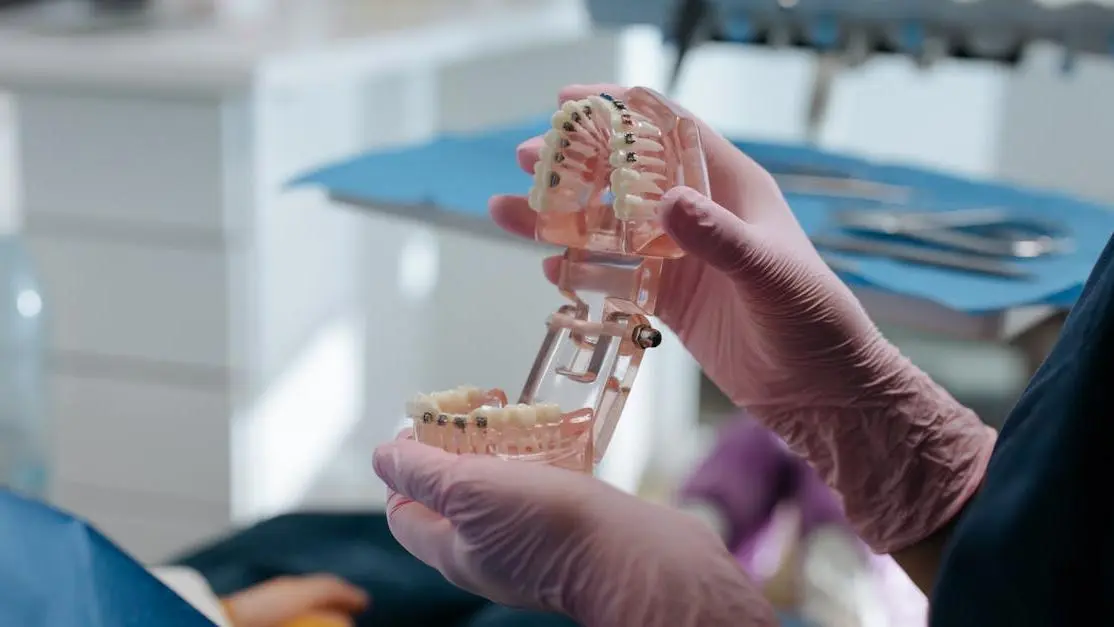Dental sealants are thin, protective coatings painted onto the chewing surfaces of back teeth that help stop cavities before they start.
They shield the deep grooves in molars and premolars where food and bacteria easily hide—even if you brush and floss well.
Suitable for kids, teens, and adults, dental sealants can prevent up to 80% of cavities for several years. If you’re interested in keeping your family’s smiles healthy and cavity-free in Cookstown and nearby areas, dental sealants are a smart, straightforward way to add valuable protection.
Understand What Dental Sealants Are and How They Work
Dental sealants protect teeth where brushing and flossing often fall short—deep grooves and pits on your back teeth. If you want a direct, practical way to block cavities before they even start, sealants can do it.
Key advantages for families in Cookstown and surrounding areas:
- Long-lasting barrier: Sealants can cut cavities by up to 80% in the first 2 years, and by about 50% for another two.
- Proven for all ages: Sealants aren't just for kids. Teens, adults, and even young children with deep grooves benefit.
- Material that adapts: Resin or glass ionomer sealants physically block bacteria and food, right on the tooth's surface.
- Research-backed prevention: Children without sealants get about three times more cavities in their molars than those with sealants.
- Durability you can count on: Studies show about two-thirds of sealant material still protects first molars after 7 years.
The process is simple, but the impact is huge. Once applied, sealants shield the teeth most at risk—especially for children and anyone struggling to clean those hard-to-reach back teeth. Some parents think sealants are experimental or only for their youngest kids. That’s a myth. They’re recommended by dental authorities for both baby teeth (when necessary) and permanent teeth.
In families that want predictable, proven cavity prevention, sealants deliver results brushing and flossing alone can’t match.
Discover Why Dental Sealants Are Essential for Preventive Care
Tooth decay is the most common chronic illness among children but it also hits adults. Brushing and flossing matter, but they’re not bulletproof. Grooves in your back teeth can trap germs no matter your routine. That’s where dental sealants come into play.
We see the benefits firsthand in our community. When you add sealants to your oral health routine:
- Risk reduction: Sealants lower cavity risk by up to 80% on treated teeth for several years.
- Saves time and money: Each sealed tooth can save over $11 in dental treatment down the road.
- Healthier families: Sealants mean fewer fillings and less chance of missed school or work for urgent dental visits.
- Trusted by professionals: The Canadian Dental Association and the American Dental Association both call sealants a core part of preventive dentistry.
- Better outcomes in high-risk patients: In teeth with early decay, cavities developed in just 11% of sealed teeth versus 52% of non-sealed.
Even perfect hygiene can’t guarantee deep grooves stay clean. The right preventive steps today can avoid treatment later. Making prevention a priority now means a lifetime of fewer dental emergencies for your family.
Learn Who Should Get Dental Sealants and When
Choosing the right time for dental sealants maximizes their power to prevent cavities. Timing and selection matter. Most kids should get sealants when their adult molars erupt, but the window can extend.
Who gets the most benefit?
- Children (ages 6-14): Seal molars and premolars as soon as they come in for maximum protection when teeth are most vulnerable.
- Teens and adults with risk factors: Deep grooves or a history of decay make older patients great candidates—even if they never had sealants before.
- Certain primary teeth: When young children have deep fissures, sealing baby teeth stops decay that could lead to premature tooth loss and orthodontic problems.
- High-risk patients: Anyone with past cavities or visible pits needs immediate evaluation.
At Cookstown Dental Centre, Dr. Khalid and our team excel at comfort-first prevention. We use modern, gentle materials and skip the traditional syringe. That means your child—or you—get a pain-free visit.
Families across Cookstown, Bond Head, Thornton, and nearby towns benefit from prevention that fits your schedule and your needs. We’ll work with you to build a custom preventive plan.
Choosing the right time for sealants isn’t about age—it's about assessing risk, timing, and the unique shape of your family's teeth.
Find Out What to Expect During a Dental Sealant Appointment
Getting dental sealants is quick, comfortable, and stress-free. Here's what you can expect step by step.
Step-by-step appointment flow
- We clean the tooth to remove any plaque or food particles.
- The tooth is dried, and a mild solution is applied so the sealant bonds tightly.
- After rinsing and drying, we paint the sealant directly onto the chewing surface.
- A blue curing light may be used to harden the material in seconds.
No drills. No needles. Most patients don’t feel anything at all—just a smooth tooth surface once the process is done.
Common patient concerns? We get those questions a lot. Expect the entire process to take just a few minutes per tooth. Sealants might feel a bit raised at first, but your bite adjusts quickly. There’s rarely a need for extra shaping.
Regular checkups keep you protected. We check your sealants during routine cleanings. If they need a touch-up or reapplication, it only takes a moment.
A sealant appointment is the easiest, least invasive way to lock in years of cavity protection for your family.
Compare Types of Dental Sealant Materials and Their Benefits
Choosing the best sealant material boosts effectiveness and longevity for every patient. Not all sealants are the same.
Options for every need
- Resin-based sealants: The most common. Best for long-term retention—up to 80% still in place after two years. Ideal for dry environments and patients who want robust, lasting results.
- Glass ionomer sealants: Excel when moisture control is tough. Release fluoride on the tooth for added decay protection. Great for younger kids and partially erupted teeth.
- Hybrid/composite materials: Offer a blend of retention and fluoride release. Suitable for those who need tailored protection.
- Colored vs. clear sealants: Some are colored for easy visibility during checkups, making quick repairs easier. Others are clear, which may appeal to adults concerned about appearance.
- Low-filler vs. high-filler products: Less filler means easier application without losing effectiveness—key to consistent results, as supported by clinical studies.
- Auto-cure vs. light-cure: Self-setting sealants are an option where light-curing is less practical, such as community outreach or nervous younger patients.
All modern sealants are extremely safe. BPA exposure is hundreds of times lower than typical environmental sources, with BPA-free options always available for extra peace of mind.
Our clinic selects sealant materials based on your family’s needs and the situation that day. Years of experience, a wide range of materials, and the latest methods ensure the best fit for every patient.
Separate Fact from Fiction: Are There Risks or Downsides to Dental Sealants?
You deserve honest answers before making any decision about your family’s health. Here’s the truth: dental sealants are safe, reliable, and have very few drawbacks when placed and maintained properly.
Some parents worry about BPA or allergies, but current science and major dental organizations stand behind the safety record of dental sealants. The amount of BPA exposure from a sealant is so tiny that you’d get many times more from daily air and food. For anyone who wants added reassurance, BPA-free options are always available.
Let’s clear up the most common concerns you might hear:
- Sealants rarely trigger allergic reactions. For the extremely sensitive, you can discuss your family’s medical history with us so we can choose the right product.
- If a sealant wears out or chips, a quick reapplication solves the problem. That’s why regular dental checkups matter. Sealants failing silently is rare when you keep up with routine cleanings.
- Can sealants seal in “hidden” cavities? The research proves any early-stage decay under a sealant often stops progressing. For deeper cavities, more traditional treatment works best.
- Will insurance cover the cost? Most plans pay for children’s sealants. Some adult coverage exists, especially for high-risk patients after a discussion with your dental provider.
- Sealant loss happens gradually. If your child eats very hard or sticky foods, sealants sometimes chip, but the fix is fast and straightforward at your next exam.
For almost every patient, the benefits of sealants far outweigh these rare, minor issues.
Explore the Lasting Benefits of Dental Sealants for Your Family’s Oral Health
Dental sealants give families a reliable head start toward a lifetime of cavity prevention. When properly applied and checked, they last five to ten years—often protecting the most vulnerable teeth well past childhood.
Cleaner teeth, easier home care, and fewer emergencies. Those are the everyday results. Parents love how much less stressful dental visits become when fillings and drills fade into the background.
Think of these clear, nearly invisible layers as an insurance policy for your smile:
- Long-term defense: Up to 90% of sealed chewing surfaces remain cavity-free for five years or longer, as long as your dentist monitors and maintains them.
- Simplified brushing: Smoother surfaces mean your kids (or you) can clean teeth better with less effort.
- Emotional relief: Fewer surprises, emergencies, or school absences. More confidence for both kids and parents.
- Fewer dental costs over time: Less out-of-pocket spending on fillings, crowns, or urgent care appointments.
- Peace of mind: Families with strong preventive routines have much lower rates of dental pain, decay, or missed activities.
We see the difference in our patients every year. Less drama, less discomfort, more smiling.
Know When It’s Time to Consider Dental Sealants
When should you take action? Timing is everything if you want to beat cavities before they even start.
Red flags that say it’s time:
- Newly erupted adult molars or premolars: Sealants work best as soon as these teeth are visible, typically around ages six and twelve.
- Previous history of decay: If cavities have happened before, sealing risk spots stops problems in their tracks.
- Teeth with deep grooves, pits, or stains: These surfaces are magnets for bacteria—earlier protection pays off.
- Kids or adults with difficulty cleaning their back teeth: If your child struggles, or you notice food stuck after brushing, sealants are a direct solution.
Our comfort-first approach means we tailor visits for Cookstown-area families. Whether you’re in Bond Head, Beeton, Tottenham, or right here in Cookstown, we want every visit to feel stress-free. Your questions matter. We’ll guide you on timing, provide custom recommendations, and make sure you feel good about your preventive choices.
Don’t wait until a cavity appears—start strong, and stay ahead of dental problems with proactive protection.
Take the Next Step Toward Preventing Cavities
Ready to act? Book a visit or ask about dental sealants at your next checkup. Empower your family with the knowledge and care they need for long-term oral health.
Preventive care works best as a partnership. Stay curious. Ask questions. Let our team help you take control, so your loved ones avoid unnecessary dental drama.
Conclusion: Make a Smart Investment in Long-Term Dental Health
Dental sealants are proven, practical, and affordable for families who want fewer cavities and more peace of mind. By understanding how they work and when to get them, you protect the people you care about—sometimes for an entire decade. Make your next move a smart one: reach out to Cookstown Dental Centre for expert guidance and a pain-free sealant experience rooted in caring, comfort, and true prevention.

